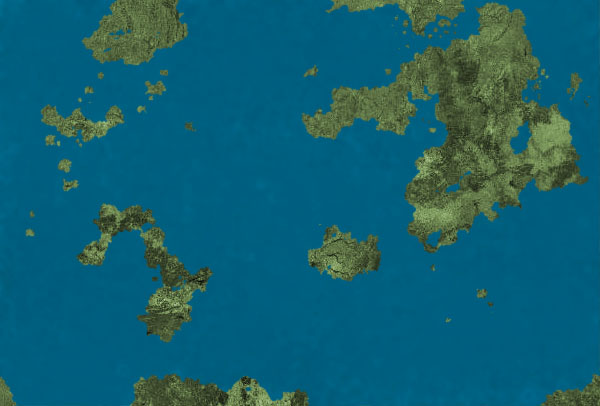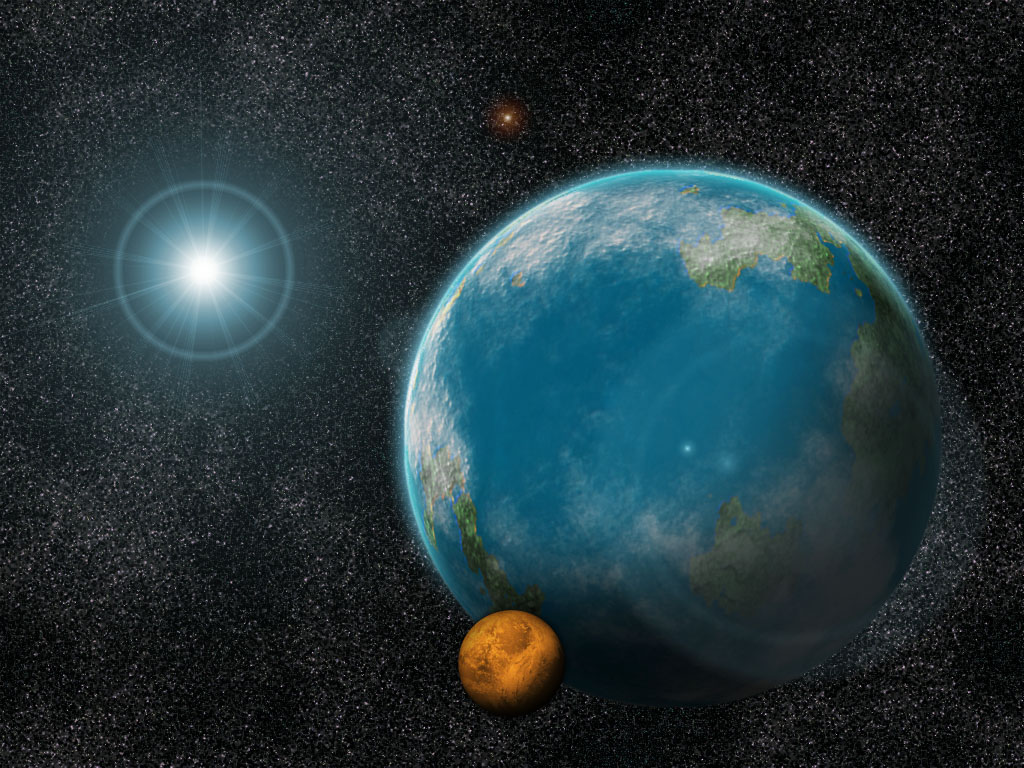Eirh
From Gephqua
(→Animal Life) |
|||
| Line 52: | Line 52: | ||
==Animal Life== | ==Animal Life== | ||
| + | |||
Animal life is defined as organisms that are heterotrophic; that is, they require sustenance upon something different from them selves; as opposed to autotrophs which produce their own sustenance (such as the phototrophs); and which are motile at least at some stage in their lifespan. The animal life on Eirh ranges from microscopic, unicellular organisms to vast, robust multicellular organisms--including the [[Gephqua]] themselves which are the most advanced lifeforms on the planet and its only sentient species. | Animal life is defined as organisms that are heterotrophic; that is, they require sustenance upon something different from them selves; as opposed to autotrophs which produce their own sustenance (such as the phototrophs); and which are motile at least at some stage in their lifespan. The animal life on Eirh ranges from microscopic, unicellular organisms to vast, robust multicellular organisms--including the [[Gephqua]] themselves which are the most advanced lifeforms on the planet and its only sentient species. | ||
| + | |||
| + | ===Sea Gels=== | ||
| + | |||
| + | Occupying a similar niche as Earth's jellyfish, the sea gels resemble overgrown unicellular organisms, though they are multicellular. Most have flat bodies, and they propel themselves through the water with an flagellum-like appendage, while undulating their body to help swim. They are predatory, usually feeding upon anything smaller than themselves. To feed they will wrap themselves over the body of an organism, and inject a toxic enzyme which both stuns or kills (depending on the species) its prey as well as begins breaking down the tissue which is absorbed directly by the sea gel through its cellular membrane. These animals are asexual, and reproduce by mitosis, producing a "bud" which eventually separates from the parent creature, the offspring is an exact genetic duplicate of the parent. Sea gels can be found throughout Eirh's oceans, and range in size and shape from the nymph sea gel (about the size of a pencil eraser) to the giant phantom (about six feet long, including its flagellum). Due to their toxin, swimmers are always cautious when swimming in the seas, as even some species of small sea gels have enough toxin to kill an adult Gephqua. | ||
| + | |||
| + | ===Placocalvae=== | ||
| + | |||
| + | A group of bony-headed, endothermic, air-breathing, marine animals superficially resembling cetaceans (Earth whales and dolphins). | ||
==Phototrophs== | ==Phototrophs== | ||
Revision as of 00:35, 15 September 2007
| ||

| ||
|---|---|---|
| Adjective Form: | Eirhan | |
| Location: | The Korah System | |
| Solar Position: | 5th | |
| Inhabitants: | The Gephqua | |
| Percent Water: | 85% | |
| Percent Land: | 15% | |
| Day Length: | 71.32 Hours | |
| Year Length: | 1,236 Days | |
| Mass: | 1.25 Earths | |
| Circumference: | 31,125 Miles 50,090 Km | |
| Moon(s): | Rona | |
| Aphelion Distance: | 447,838,164 Miles 720,725,662 Km 4.818 AU | |
| Perihelion Distance: | 403,419,582 Miles 649,240,883 Km 4.34 AU | |
| Axial Tilt: | 24.137° | |
| Surface Temp: Min: Mean: Max" | 12 °F (-11 °C) 77 °F (25 °C) 127 °F (53 °C) | |
| Atmospheric Composition: | 70.01% Nitrogen 28.89% Oxygen 1.001% Argon 0.099% CO2 0.01% H2O Vapor | |
Eirh is the fifth planet of the Korah system and is the second largest terrestrial planet. It is often called "HaEirh", "Home World", or simply "The World".
Home to millions of life forms, including the dominant species, the Gephqua. The planet formed roughly 5.2 billion years ago, with life having only appearing on the planet just over a billion years ago. Over this period of time Eirh's biosphere has changed considerably, along with all its other planetary systems.
The planet's surface, like that of Earth, is covered in tectonicplates which move slowly across the surface of the planet. The vast majority of the planet's surface (about 85%) is covered in water, of that most of it is fresh water; the remainder of the planet's surface is covered with land, the largest land mass on the planet being the Great Continent which comprises the bulk of the planet's 15% land area. Eirh's interior is active, with a thick layer of mantle, below which is a dense molten core.
The planet's chief cosmic interaction is between its star, Korah, and its moon, Ronah. Eirh orbits Korah once for every 412.51 times it rotates on its axis (i.e. an Eirhan year takes 412.51 Eirhan days), which equals to about 1,236 Terran days or about 3½ Terran years. Eirh has an average orbital distance from Korah of 425,628,873 miles or 4.578 AU, making Eirh about four times further from Korah as Earth is from the Sun; Eirh needs to be this far away due to Korah's significantly more intense presence than Sol. The planet's axis is tilted to about 24°, allowing for seasonal variations throughout the year, however temperate they might be. Eirh has only one moon, Rona, which is believed to be a captured object. Unlike our moon, Rona is not tidally locked, which means from an Eirhan observer the moon rotates upon its own axis. Rona effects the tides, helps stabalize the planet's axial tilt and is believed to be gradually slowing down Eirh's rotation.
Roughly 350 million years ago the planet suffered the Great Axial Shift, a large cosmic body collided with the planet's surface with such force that it considerably shifted the planet's axis from a 42° angle to the 24° angle it now has--the event was so catastrophic that it ended virtually all life on the planet. It's believed that roughly 99% of the planet's multicellular organisms went extinct in the event and is considered one of the most important events in the planet's evolutionary history.
Contents |
Planetary Evolution
Physical Characteristics
Geology
Hydrosphere
Geography
Atmosphere
Weather and Climate
Climate Zones
Equatorial Zone
Temperate Zone
Twighlight Zones
Weather Phenomenon
Magnetic Field
Orbit and Rotation
Divisions of Time
Great Axial Shift
Moon
Biosphere
Eirh is home to countless millions of species of organisms. Due to eighty-five percent of the planet being covered in oceans, the majority of all life exists in the seas, of that the majority are microscopic organisms.
Of these varied forms of life it is worth taking a closer look at some of the notable components of the Eirhan biosphere.
Animal Life
Animal life is defined as organisms that are heterotrophic; that is, they require sustenance upon something different from them selves; as opposed to autotrophs which produce their own sustenance (such as the phototrophs); and which are motile at least at some stage in their lifespan. The animal life on Eirh ranges from microscopic, unicellular organisms to vast, robust multicellular organisms--including the Gephqua themselves which are the most advanced lifeforms on the planet and its only sentient species.
Sea Gels
Occupying a similar niche as Earth's jellyfish, the sea gels resemble overgrown unicellular organisms, though they are multicellular. Most have flat bodies, and they propel themselves through the water with an flagellum-like appendage, while undulating their body to help swim. They are predatory, usually feeding upon anything smaller than themselves. To feed they will wrap themselves over the body of an organism, and inject a toxic enzyme which both stuns or kills (depending on the species) its prey as well as begins breaking down the tissue which is absorbed directly by the sea gel through its cellular membrane. These animals are asexual, and reproduce by mitosis, producing a "bud" which eventually separates from the parent creature, the offspring is an exact genetic duplicate of the parent. Sea gels can be found throughout Eirh's oceans, and range in size and shape from the nymph sea gel (about the size of a pencil eraser) to the giant phantom (about six feet long, including its flagellum). Due to their toxin, swimmers are always cautious when swimming in the seas, as even some species of small sea gels have enough toxin to kill an adult Gephqua.
Placocalvae
A group of bony-headed, endothermic, air-breathing, marine animals superficially resembling cetaceans (Earth whales and dolphins).
Phototrophs
What we might typically call "plants", organisms that feed primarily through the absorption of light via photosynthesis. On Eirh two similar, but completely unrelated, "plants" exist. The most familiar are the phototrophs that consume primarily blue light, and photosynthesize it into simple sugar compounds--these typically have a green or greenish color to their photosynthetic components due to their cells containing a substance similar to chlorophyll. The other variety of phototrophs are those which feed upon ultraviolet light, due to Korah's (the sun) status as a Type A/Type F blue star there is considerable amount of ultraviolet light which radiates the planet; since these "plants" absorb only ultraviolet light they reflect all the other frequencies of the spectrum which gives them a white or off-white appearance in their photosynthetic components. The fields of deep green grasses which cover most of the planet's land surfaces are an example of the former, while the white fern forests in the northern Twightlight Belt is an example of the latter.

